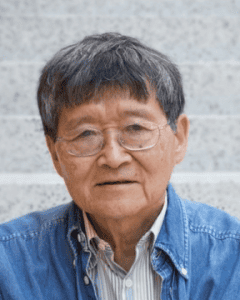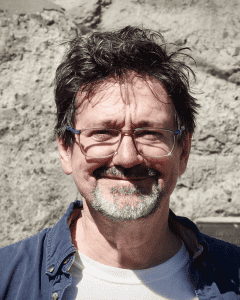Monday, May 19, 2025, 12:30 – 2:30 pm, Talk Room 2
Congratulations to Drs. Ken Nakayama and Thomas Sanocki, the recipients of the VSS Founders’ Awards. These awards are presented in recognition of their roles in launching our Society and organizing the first several meetings that have now been held annually for the last 25 years.

Ken Nakayama
Professor Emeritus, Harvard University; Visiting Research Scientist at the University of California, Berkeley
Ken Nakayama has enjoyed a long, highly impactful career in vision science, dating back to his days as graduate student at UCLA, where his dissertation project used single-unit recordings to look for potential neural concomitants of visual masking in optic nerve fibers of the cat. Next, Ken pursued postdoctoral training at UC-Berkeley, where his mentors included legendary vision scientist Horace Barlow. To quote Ken, “Just Barlow’s example as a great scientist was all the mentoring I needed.” After his postdoc stint, Ken moved to the University of Newfoundland where he was an Assistant Professor of Neurophysiology. But after two years he concluded the fit wasn’t right, so he accepted a position at the Smith-Kettlewell Eye Research Institute in San Francisco where he remained for almost 20 years. It was during that period that Ken’s research transitioned to human psychophysics, an approach to vision science that allowed him to direct his creativity to the question of why we see things the way that we do. In 1990 Ken was recruited to the Psychology Department at Harvard University where he and faculty colleague Patrick Cavanagh created the Harvard Vision Sciences Lab, which quickly became populated by an impressive cadre of trainees and visiting vision scientists. Ken was appointed Edgar Pierce Professor of Psychology in 1998 and he served as Chair of the Psychology Department from 2011 to 2016. He is now Professor Emeritus at Harvard and Visiting Research Scientist at the University of California, Berkeley.
Ken’s research accomplishments are many and span multiple aspects of vision. To paraphrase VSS member Nancy Kanwisher, “Ken has made a lifetime of contributions to our understanding of mid-level vision, including work on visual search, visual attention, surface perception, stereo vision and its role in image segmentation, face perception including individual differences.” By Ken’s own admission, many of his most insightful studies emerged from the simple act of “just looking.” Ken was awarded the prestigious Tillyer Medal by Optica in 2017 for his unique formulations of visual surface perception. In that same year, he also was selected as the recipient of the Golden Brain Award given by the Minerva Foundation in recognition of his fundamental contributions to research in vision and the brain. Ken is an elected member of the American Academy of Arts and Sciences and of the Society of Experimental Psychologists. He has served on numerous advisory and editorial boards over the years.
Most notable for this citation, Ken is responsible for conceiving and creating our professional Society, devoted to understanding vision and its relation to cognition, action and the brain. That dream culminated in the establishment of VSS in 2000. In partnership with Tom Sanocki, Ken organized the first several meetings of VSS. He also negotiated arrangements with the Journal of Vision to publish VSS meeting abstracts, and he built the organizational structure and procured the support services that launched VSS on its remarkably successful trajectory. In 2016, VSS established the Ken Nakayama Medal given annually “to a vision scientist who has made exceptional, significant, or lasting contributions to vision science.”
For a detailed account of Ken’s successful journey as a vision scientist, read his engaging essay “Coming of Age in Science: Just Look” published in the Annual Review of Vision Science.

Thomas Sanocki
Professor Emeritus, University of South Florida
Tom Sanocki completed his undergraduate degree in 1980 at Northern Michigan University, with a major in Psychology and a Minor in Computer Science. His PhD was awarded in 1986 from the University of Wisconsin, Madison, in Cognitive Psychology; his dissertation was on the impact of structural regularity (i.e., visual knowledge) on letter recognition. In that same year, Tom joined the Psychology faculty at the University of South Florida (USF) as an Assistant Professor, rising to the rank of Full Professor in 1998, and recently transitioning to Professor Emeritus status.
Tom is an accomplished cognitive psychologist who is best known for his work on object/form perception, visual priming, perceptual grouping, scene perception and reading. He has published dozens of articles, chapters and commentaries, as well as a textbook on Statistics. At USF, he served as Director of the Cognitive & Neural Sciences Program, and he holds a U.S. patent for “Dynamic Reading Instruction.” At USF, he taught courses covering a range of topics including the creative brain, visual cognition, and art, design and psychology.
In 2000, Tom accepted Ken Nakayama’s invitation to help in launching the nascent Vision Sciences Society and in planning and organizing the first few VSS meetings (which they heroically accomplished on their own). Tom was able to secure support from USF to subsidize those first few VSS meetings. From the outset, Tom played a vital role ensuring that the program included sessions on topics with appeal to those working in visual cognition. When it became obvious that Ken and Tom’s vision was becoming a reality, they created a board of directors, with rotating membership, to oversee the meetings and other activities of VSS. As an inaugural board member, Tom brought wisdom and insight to the Board’s activities.
The efforts of these two founders proved successful, as evidenced by the rapid growth in VSS meeting attendance, the number and, particularly, breadth of session topics and by the rapid growth in the membership by vision scientists from all over the world. VSS is now proud to award Ken and Tom with the 25th Anniversary Founder’s Awards in recognition of their seminal roles in launching our highly successful Society.
